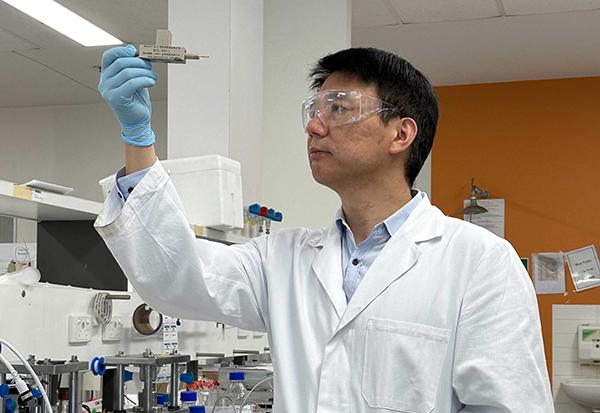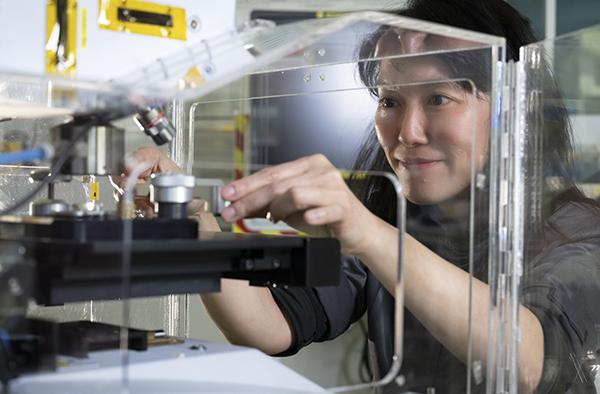Key Points
A new type of rechargeable battery that uses protons as charge carriers, offering a safer and more environmentally friendly alternative to conventional lithium-ion batteries
An innovative design developed by UNSW researchers harnesses protons for fast charge transfer and exceptional stability over thousands of cycles
A tailored electrochemical cell and in-situ monitoring tracked chemical changes during charging and discharging cycles using the Infrared Microspectroscopy beamline
Researchers from the University of New South Wales (UNSW) have developed a new type of rechargeable battery that uses protons (H⁺ ions) as charge carriers, offering a safer and more environmentally friendly alternative to conventional lithium-ion batteries.
Unlike traditional batteries that rely on metal ions, such as lithium or sodium, this innovative design harnesses protons for fast charge transfer and exceptional stability over thousands of cycles.

The researcher team led by Professor Chuan Zhao at UNSW’s School of Chemistry reported in the prestigious journal Angewandte Chemie the development of a novel small organic molecule called tetraamino-benzoquinone (TABQ), as a cathode material in this proton battery. Developed by PhD candidate Sicheng Wu and Professor Zhao, this TABQ molecules plays a crucial role in storing and transporting protons, leading to remarkable performance and long-term stability.
“Using this TABQ cathode material, we successfully built an all-organic proton battery that performs efficiently at both room temperature and sub-zero freezing temperatures,” said Professor Zhao in a media statement.
A key aspect of the research involved real-time monitoring of chemical changes during battery operation, achieved through advanced synchrotron infrared measurements. Dr Pimm Vongsvivut, Senior Scientist at the Australian Synchrotron’s Infrared Microspectroscopy (IRM) beamline, collaborated with this UNSW team to develop a custom in-situ electrochemical cell and monitoring technique.
“Through this collaboration, we designed a tailored electrochemical cell and an in-situ monitoring approach to track chemical changes during charging and discharging cycles. Our synchrotron infrared technique provided direct chemical evidence confirming that the energy storage mechanism of TABQ relies on a reversible carboxyl/hydroxyl conversion driven by proton uptake and release during cycling,” said Dr Vongsvivut.

The study also revealed that intercalated protons (or hydronium ions) can protonate amino groups, contributing to an intermolecular hydrogen-bond network that enhances the battery’s performance. Computational analysis confirmed that protons are more easily stored in TABQ compared to metal ions, reinforcing the efficiency of this organic system.
One of the most significant advantages of all-organic proton batteries is their water-based electrolyte, which offers greater safety, cost-effectiveness, and environmental sustainability compared to traditional lithium-ion batteries. By using water as a solvent instead of flammable organic liquids, these batteries reduce safety risks and lower manufacturing costs. Additionally, the materials used are more abundant and affordable, making them a promising alternative for future energy storage solutions.
This breakthrough aligns with Australia’s commitment to achieving net-zero emissions, demonstrating how innovative materials and advanced synchrotron techniques can contribute to next-generation sustainable energy storage.







